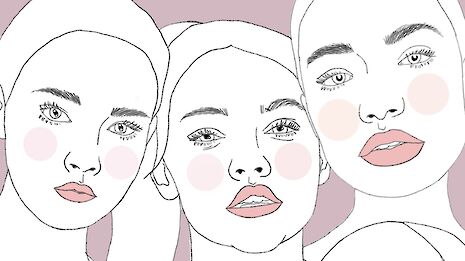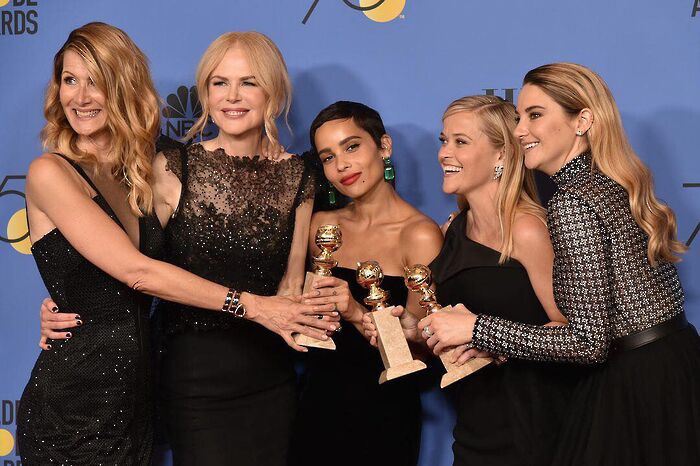Refining Beautiful
In her first column, Caterina Bragoli discusses the effect of long-held standards in the fashion industry

The fashion industry progresses forward with intangible speed, whether through the seasonal rotation of garments or the way in which consumers are fed fast fashion. This rapidity rarely allows a glimpse into the hard-hitting realities that occur behind the scenes, or at the forefront of campaigns, which are camouflaged by a façade of aestheticism. The problematic standards within the industry require addressing amidst the tumult of advertising, modelling and creating.
Advancing forward with its unprecedentedly swift churning out of garments and advertisements in an attempt to keep people enthralled and captivated by the perplexing glamour of the fashion industry, an environment of ever-changing trends has undeniably emerged. Whilst we are often programmed to seek comfort in the notion of an absent corporate aesthetic, this idea has gradually been contorted into the problematic concept of the ‘aesthetic trend’. We are encouraged to seasonally scour through various media outlets, whether it be Instagram or Vogue, looking for the most desirable items that are being hailed as the next big thing. Disposability rears its head in this instance, with those coveted items having a life span of approximately four months, solely to be deemed outdated.
The effect of this is far more deep-rooted: it serves to exacerbate the unattainable images of perfection that women are consistently fed daily. These toxic notions of what constitutes flawlessness are fleeting. How can a standard of perfection be established when what’s fashionable changes (quite literally) like the seasons do? The coveted aesthetic trend of the moment, whether it be embellished designer logos emblazoned on garments or homages to 90s dresses, is temporary, thus contradicting any idea of a consistent ‘perfect look’. And so, the aesthetic trend fosters an environment of inadequacy and incompletion. In reality, as opposed to shoppers flocking to partake in this seasonal masquerade, people should be encouraged to shun emerging trends in favour of what they feel works best for them. If fashion is a mode of expression, why are we being fed transient corporate aesthetics that are changed at least four times a year?
Feeling the unyielding insistence to remain up-to-date with cutting edge trends evokes pressurising feelings. This ties into an equally fundamental consequence: the societal pressure surrounding fashion. Fashion was - and undeniably remains today - a creative and expressive art form that has morphed into an indicator of social status. Fashion is essentially utilised as a weapon against women, a set benchmark that only a select few can really reach. An unfortunate target for this tirade of pressure to dress in a way deemed fashionable is teenage women. Searching for your own identity becomes increasingly challenging when you are fed an image of what that identity should be. Stepping out of the door into a street of judging stares when someone looks different is a calamitous reality for untold amounts of teenagers refusing to conform to a preconceived notion of perfection.
"The female spectrum of beauty is unbounding due to its sheer enormity and variety"
The curse of comparison plays a vital role in the cultivation of this social pressure. The dissemination of images surrounding what women are supposedly aspiring to look like will, without doubt, feature models wearing highly sought-after clothing, alienating a significant proportion of consumers who financially can’t afford to keep up with the financial strain and disposability factor of fashion. These factors serve to catapult the fashion industry to a realm which is unattainable for many people across an array of demographics. With an untold number of women partaking in this cruel game of comparison, feelings of inadequacy run rampant. Fashion is lauded for playing such a crucial role in enabling those who are artistic, unique and original in their own way. However, by placing the industry on such an inaccessible platform, what once was a vital source of refuge becomes something only for those able to pay the price.
When most people are asked about problems in the world of fashion, there is one topic that is at the forefront of most answers: body image. More specifically, the archetypal body image associated with the modelling industry. A constant, stationary aspect of the industry is the notorious use of ‘underweight’ women to model. It is fundamental to acknowledge that this important topic is being discussed – perhaps not particularly actively – by specific European countries such as Italy, Spain and France, and action is beginning to surface. France has legislated that models are required to provide medical certificates to confirm they are healthy enough for work, after banning extremely thin models. Yet, does this emerging change really make a difference?
For years, the fashion industry has projected what is a widely-acknowledged portrayal of what the ideal female body is: tall and excessively slender. Whilst it is important to acknowledge that this is a body type many women have, and shouldn’t be attacked excessively, the damage that the glorification of this image has caused to young women is relentless. “Exposing young people to normative and unrealistic images of bodies leads to a sense of self-depreciation and poor self-esteem that can impact health-related behaviour,” says French health and social affairs minister Marisol Touraine. What Touraine states has great significance: this intangible perception of the most coveted female body type that has been consciously accepted for decades has never truly had to account for its unfathomable impact. In an ever-progressive socio-political climate, with the emergence of modern-day feminism as an immovable political force, how can women be confined to embrace a sole body type? The female spectrum of beauty is unbounding due to its sheer enormity and variety. Shunning the vast majority of women in such a callous way is detrimental to any progression occurring within the industry.
Trickling into the media gradually are images of various sized models gracing catwalks or covers in an attempt to promote the acceptance of all body types. There should be no single standard when it comes to body image: our bodies are our bodies and it should be as simple as that. This idea prompted 37 leading models, including Iskra Lawrence and Savina Karlsson, to write a letter to the fashion community pledging their support for the National Eating Disorders Association. They urged the American Fashion Industry to ‘prioritise health’ and ‘celebrate diversity’, two factors that need to be addressed on a global platform. The letter claims that eating disorders have the highest mortality rate out of all mental health illnesses, which is a harrowing reality that drives the cruelty of this aspect of the industry home. Fashion is and should continue to be empowering, yet it also has the capacity to leave severe scars on young women trying to find their identities. These instances of women banding together and trying to exert control over such a vital problem displays a sense of unparalleled solidarity. It proves to an industry that has been set in its ways for decades that change is going to happen, or else the industry will ostracise itself as more women are praised for their natural bodies.
Fashion will always be a vital mode of expression to people across the globe, allowing them to channel their originality and creativity in an eclectic way. Yet, the unattainably high levels of body image that have been set for decades seem so infallible. By remaining such an intrinsic part of the industry, masses of people who are keen participants will continue to be ostracised. The damage that has been caused by unfair and alienating beauty standards may never be eradicated, but with the promise of change ushering its way into the forefront of the media, a new beauty standard can be established: that there is no room for standards.
 Comment / Plastic pubs: the problem with Cambridge alehouses 5 January 2026
Comment / Plastic pubs: the problem with Cambridge alehouses 5 January 2026 News / Cambridge academics stand out in King’s 2026 Honours List2 January 2026
News / Cambridge academics stand out in King’s 2026 Honours List2 January 2026 News / Cambridge businesses concerned infrastructure delays will hurt growth5 January 2026
News / Cambridge businesses concerned infrastructure delays will hurt growth5 January 2026 News / AstraZeneca sues for £32 million over faulty construction at Cambridge Campus31 December 2025
News / AstraZeneca sues for £32 million over faulty construction at Cambridge Campus31 December 2025 Interviews / You don’t need to peak at Cambridge, says Robin Harding31 December 2025
Interviews / You don’t need to peak at Cambridge, says Robin Harding31 December 2025










